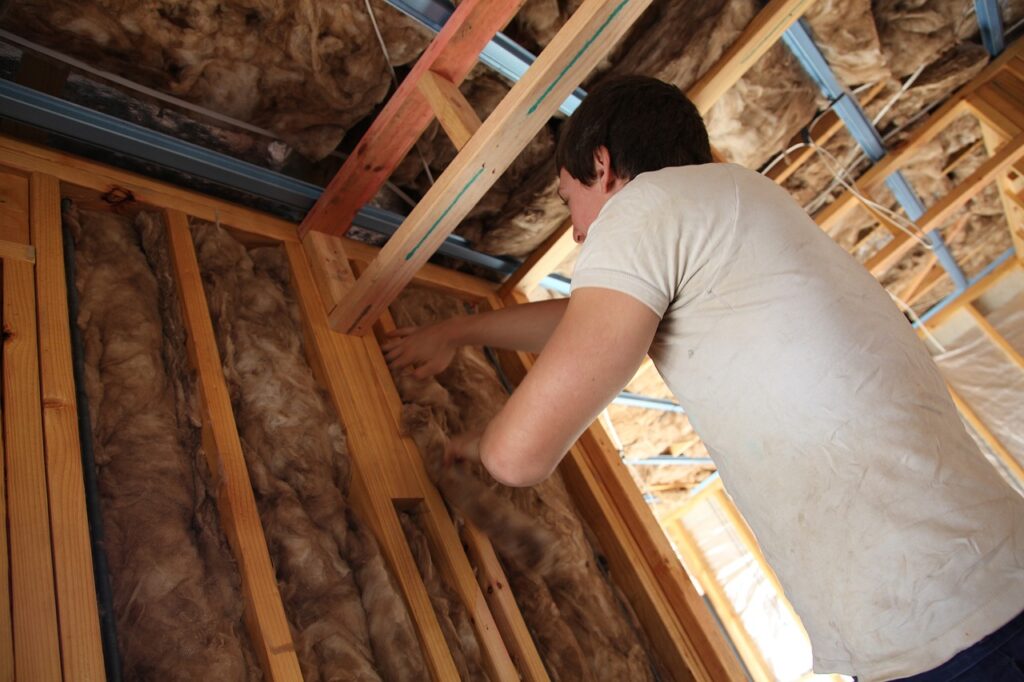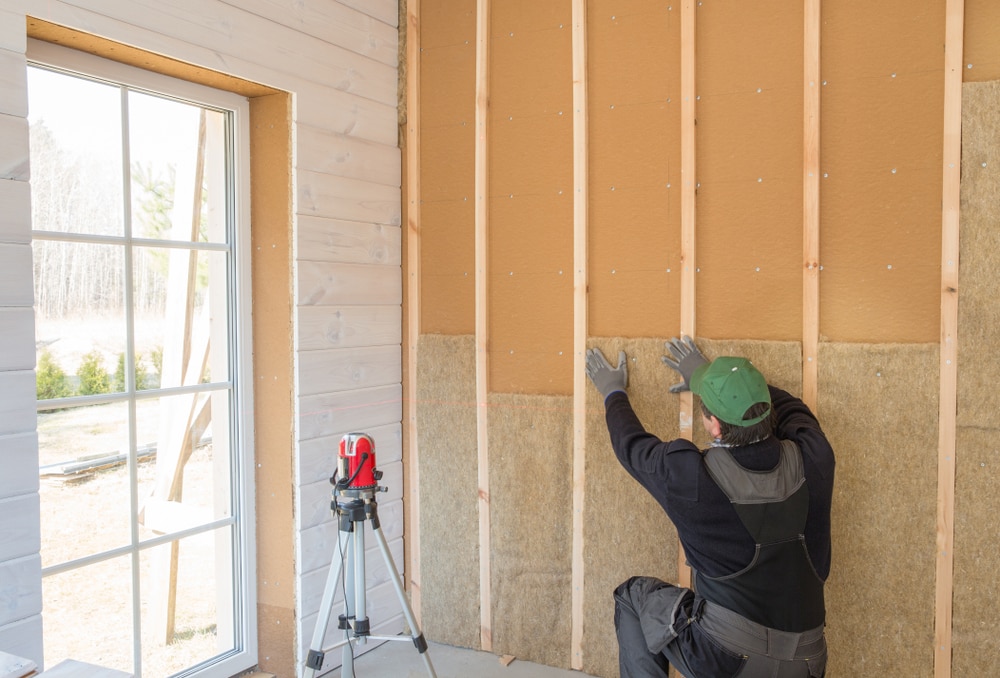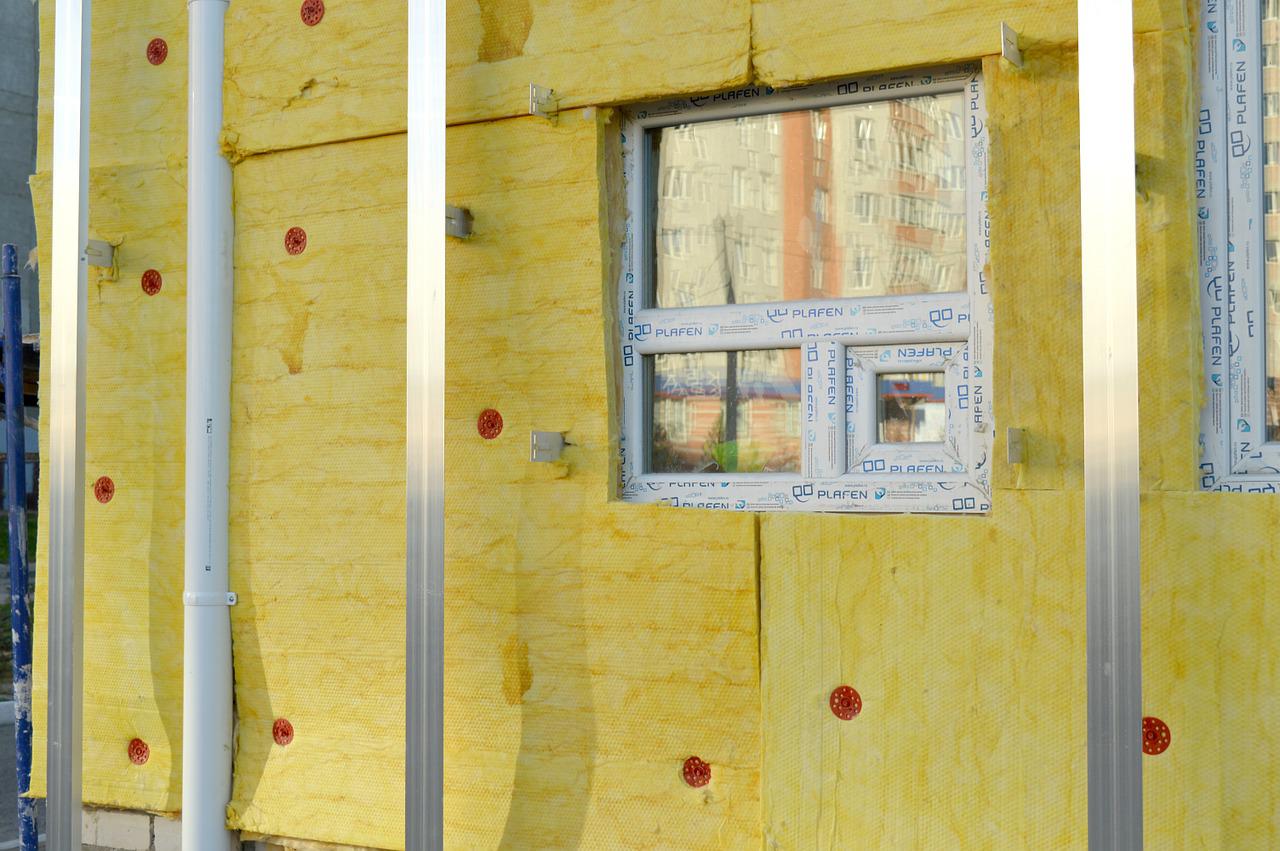Insulating Homes With Sheep Wool: Pros & Cons (2025 Guide)
-

- Last updated:

Many people look for effective ways to warm the home in preparation for cold weather, but here we have an inexpensive solution: home insulation using sheep wool!
Sheep wool has been used for centuries to keep people warm. It’s durable, fire-resistant, and breathable. It’s the best natural insulating material on the market, and you can use it in many ways.
In this article, we’ll look at the pros and cons of insulating your home using sheep wool. Further, we’ll give you a short guide on installing sheep’s wool insulation in your home.
Let’s dive in!
 Pros of Insulating Homes Using Sheep Wool
Pros of Insulating Homes Using Sheep Wool
1. Easy to Install
Sheep wool insulation is one of the easiest types of insulation to install. It doesn’t need any special tools or equipment. All you need is a staple gun and some patience! You don’t have to worry about finding help lifting heavy rolls. Just roll out the sheep wool and staple it into place!
You can easily cut out the material using a simple utility knife if you need custom-sized pieces for small areas such as pipes or wires.

2. Eco-Friendly
Sheep wool insulation is an excellent alternative to traditional insulation materials. It’s made from 100% recycled materials, and it’s eco-friendly. Besides, it is biodegradable, meaning it decomposes when you dispose of it after use.
We can also safely call it a renewable resource because it grows back after shearing the sheep.
You’ll never have to worry about having it decompose in your attic or crawl space. You can recycle and reuse it to make new sheep wool insulation.
3. Reduces Carbon Footprint
People are always looking to reduce the carbon footprint and effects of global warming. The best way to do this is by using more energy-efficient products in and around your home. The production of sheep wool insulation reduces the need for chemicals that pollute the environment.
By reducing your carbon footprint, you’re also helping the environment. Wool production does not burn a lot of fossil fuels and uses much less energy in its production compared to the other types of products on the market.

4. Absorbs Moisture
Sheep wool fibers have micro holes between them, which absorb and release moisture at a controlled rate. This makes wool insulation a perfect choice for damp environments.
One ideal place with a lot of moisture buildup is the basement. Sheep wool doesn’t only protect your basement from moisture, but it will also improve air quality.
Sheep wool is excellent at absorbing moisture, unlike mineral wool, which loses its insulation qualities when it becomes wet.
5. Durable and Non-Flammable
When choosing insulation for your home, durability, and non-flammability are crucial qualities to consider. We all need to be careful with our heating and use preventative measures against fire. One of them is having a flame-retardant insulation material in your home. Sheep wool fits perfectly into this criteria because it’s non-flammable.
Wool insulation can also last for a long time. It will provide you and your family with top-quality insulation for years to come.
6. Helps Regulate Temperature
There can be a lot of issues that arise with different temperatures if you live in an area where the temperatures fluctuate during certain times of the year.
If you want to keep your house at a certain temperature at all times, sheep wall insulation can help. It’ll regulate it so that your home always feels comfortable.

7. Soundproof
Soundproofing is all about controlling the noise transmission from one space to another. In homes, soundproofing is usually done to reduce the sound that gets into the house from the outside. It also prevents noise from entering your living or working environment.
If you’re living in a noisy apartment, sheep wool insulation will solve two problems: it regulates the temperatures while barring unwanted noises.
8. Doesn’t Cause Irritation
Sheep wool insulation is all-natural, safe, and friendly to use in your home as it doesn’t irritate the skin or eyes. It also provides a comfortable touch as it’s made of natural wool. Other insulation materials can be rough and uncomfortable.
Sheep’s wool is also naturally hypoallergenic. It won’t cause any allergic reactions or irritations of the throat, lungs, and eyes. The material is also highly breathable, perfect for homes with allergies or asthma patients who need more air circulation.
 Cons of Insulating Homes Using Sheep Wool
Cons of Insulating Homes Using Sheep Wool
1. Costly Installation
Installing sheep wool insulation is more expensive than other types of insulation. You must stuff it between the studs in your walls and ceiling, which can take longer to install compared to other types of insulation that are just blown into the attic or walls.
It can be challenging for a beginner to install, thus needing professional installation. An expert will do it well without damaging your walls or ceiling. Although there are some DIY kits available, you may still not do a good job if you don’t have the skills to do it.

2. Lower Thermal Efficiency
Sheep wool insulation has a lower thermal efficiency than other types of insulation available today. It will not provide as much heat retention as other forms of insulation. That means more heat will escape through the walls filled with sheep wool insulation compared to other insulation types.
The U-value (the measure of how well an insulator resists heat transfer) of wool is higher than other types of insulation, such as fiberglass or cellulose fiber. A 270 mm thick sheep wool insulation has a u-value of 0.16. Mineral wool has a u-value of 0.042. The higher the u-value, the poorer the insulation.
3. Precarious Production Process
Sheep wool needs treatment using borax to make it fit in insulating homes. Borax reduces insects and the growth of fungi in the wool. Also, it makes the fiber less prone to shrinkage when exposed to moisture.
The borax treatment process can be dangerous if not done well. Besides, it can even cause serious health problems if inhaled by workers or homeowners. Besides, the process can harm the environment if not done well.
 How to Install Sheep Wool Insulation
How to Install Sheep Wool Insulation
So, you’ve decided to give sheep’s wool insulation a try. Have you ever installed it yourself? Don’t worry! That takes a little work if you have the right skills. You only need a pair of scissors, a tape measure, a ruler, and a stapler. Here are the steps to take.
- Measure Where You’re Installing the Sheep’s Wool Insulation: Measure the length and width of the area you want to install sheep’s wool insulation. With this, you can determine the amount of insulation needed. Add about 20% more as a precautionary measure in case some areas need more coverage than others.
- Cut the Insulation Material to Size: You can use a utility knife or scissors. Ensure you have enough material left. The extra insulation material will help you when stapling the insulation in place.
- Staple the Material Into Position: First, staple one side of your wool insulation onto the wall. Then, staple the other side. Start by pulling the insulation out until it’s tight against the wall surface. Continue until all four sides are stapled into position.
- Use a Straight Edge or a Ruler to Pare Extra Material: Ensure you don’t cut the sheep’s wool insulation when doing this. Cut along the insulation’s edge. This way, you won’t cut into it. Repeat the steps until you insulate every area you want to insulate.
Note: This process may look simple, but as mentioned in the cons, doing it may be a challenge. If you want a job well done without damaging the wall, ceiling, or the insulating material, you are better off leaving it to professionals. This is especially so if you do not have the skills or have never done it before or if you have a large surface area to insulate.
Consult an insulation expert
Find an insulation specialist in your area, and get free, no-commitment estimates for your project.

 Conclusion
Conclusion
As we have learned, you can’t go wrong with sheep’s wool insulation in terms of eco-friendliness and environment conservation. It’s a natural product that’s renewable and sustainable; there was no harm to trees or large mammals in the production of sheep’s wool insulation.
However, it also has its cons, such as lower thermal efficiency and costly installation.
Bottom line, when faced with a decision about whether to use sheep wool insulation for your home remodeling plans, you have to weigh the pros and cons. Compare it to other materials and construction methods. This way, you will make more informed decisions based on reliable facts.
Featured Image Credit: RachelW1, Pixabay
Contents
 Pros of Insulating Homes Using Sheep Wool
Pros of Insulating Homes Using Sheep Wool Cons of Insulating Homes Using Sheep Wool
Cons of Insulating Homes Using Sheep Wool